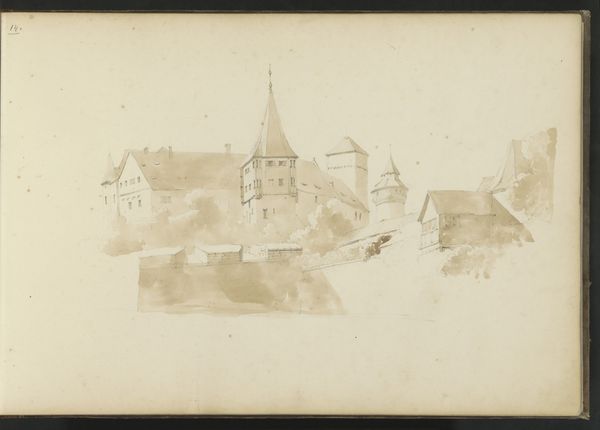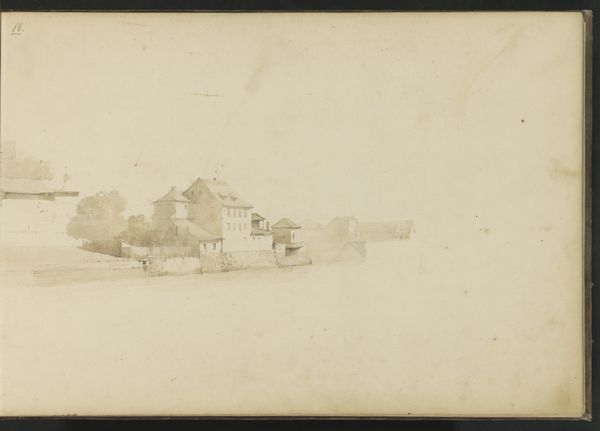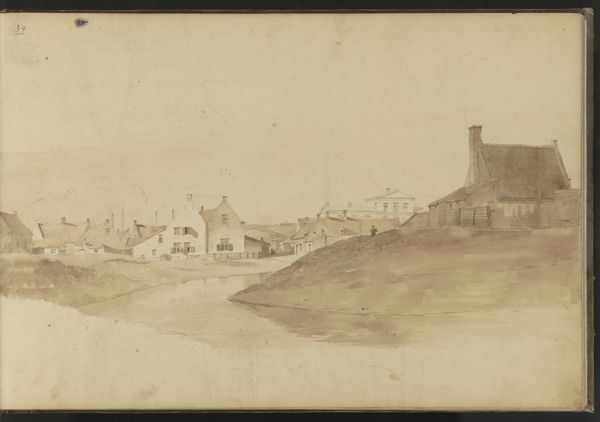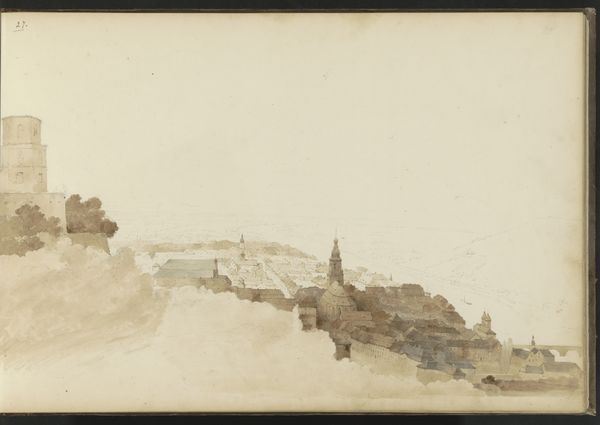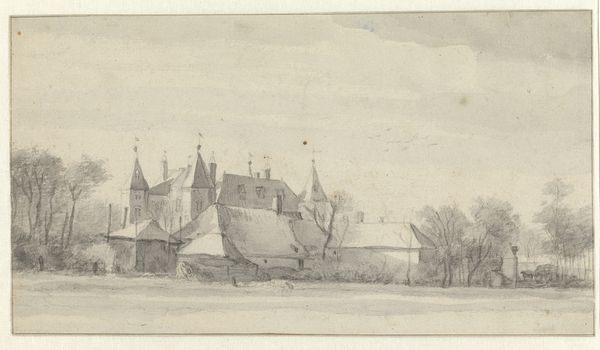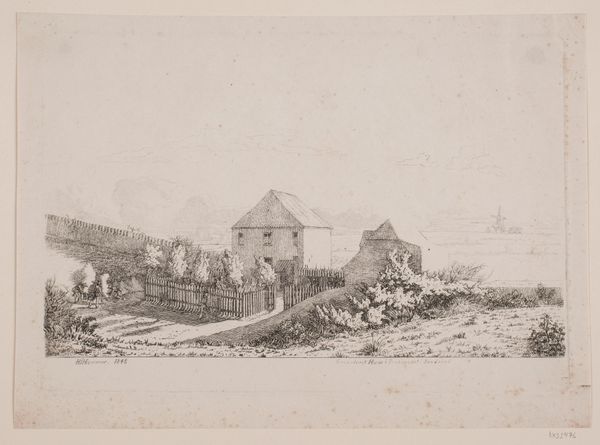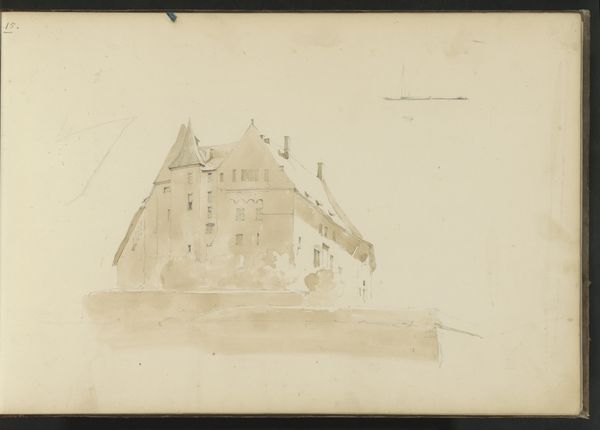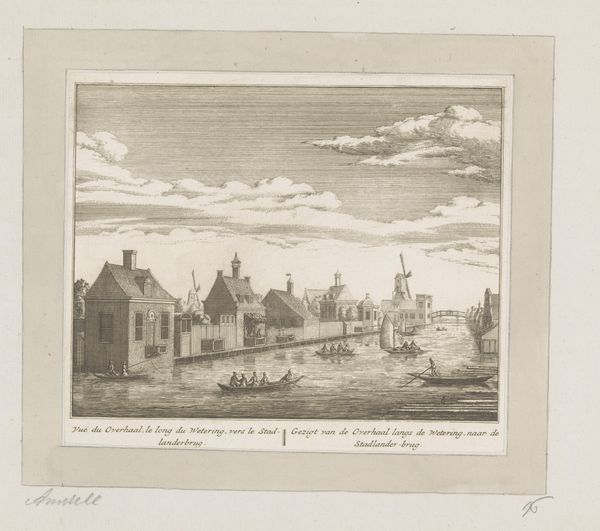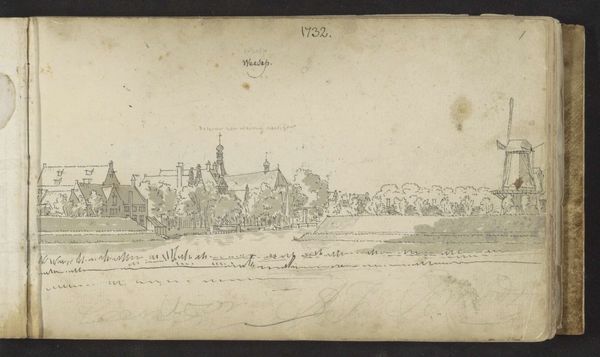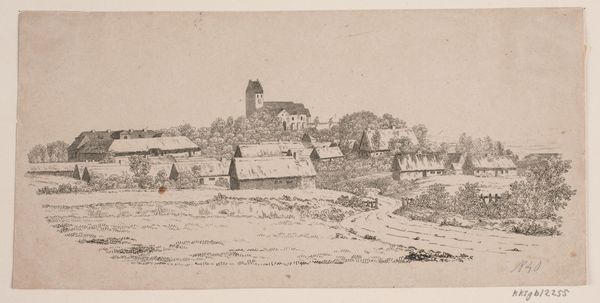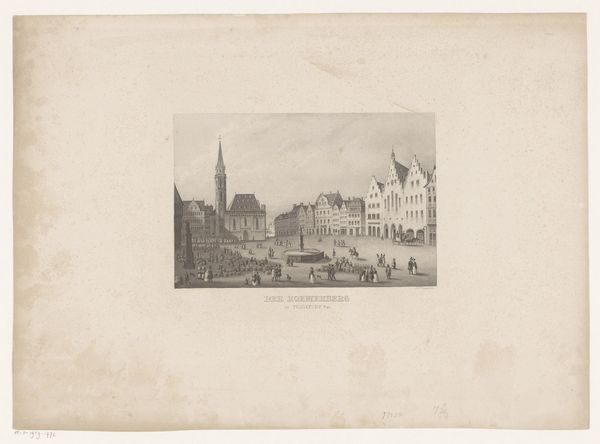
Copyright: Rijks Museum: Open Domain
Art Historian: Here we have "View of Katwijk aan Zee with the Old or Andreaskerk," created by Kasparus Karsen sometime between 1820 and 1896. It's a watercolour currently held at the Rijksmuseum. Curator: My first thought is it feels like looking at something almost faded – like an antique photograph, washed out and delicate. The brushwork is so subtle. It gives the sense of transience, don't you think? Art Historian: Absolutely. The subdued palette is key. It creates an atmosphere of stillness, almost reverence. That church, the Andreaskerk, dominates the composition. Churches always have multilayered symbolic importance as centerpieces and a community's belief system. Curator: Indeed. But think about the process—the artist meticulously applying thin washes of watercolor, building up tone, probably on fairly cheap paper too, considering its age. It speaks volumes about the artist's hand, their control over the medium, and the sheer physical labor. Art Historian: But Karsen's control gives way to the image’s conceptual power. Look at the relationship between the architecture and the landscape. The houses nestled around the church suggest a community anchored by faith, but with a close proximity to the unpredictable, untamable sea. Curator: Well, watercolours like these were fairly portable. It provided images of landscapes for increasingly urban, middle-class collectors during this period of industrial transformation. It shows this growth and the ability of art being moved and reproduced. Art Historian: Precisely! You see the Romantic longing for simpler times here. It highlights the eternal versus the ephemeral—stone against water, faith against fleeting earthly life. Curator: I see how it acts almost as documentation of that community. Each mark displays skill while revealing details of society in that specific place and time. The watercolours, in essence, allow for preservation in their material existence. Art Historian: It shows a yearning for connection. With this sense of belonging and spirituality rooted in landscape. Even if slightly bittersweet. Curator: Overall, studying these pieces reveals social transformation through production, medium and artist labour in relation to the viewer who seeks the meaning in front of the artwork.
Comments
No comments
Be the first to comment and join the conversation on the ultimate creative platform.

